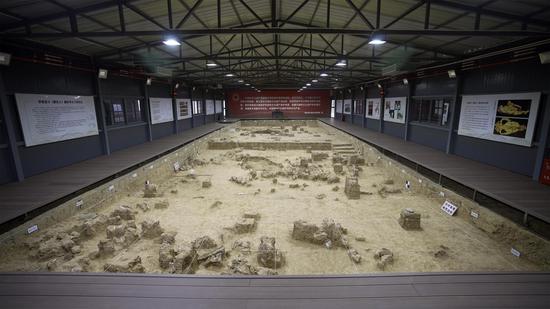Archaeologists have discovered a ruin site of the ancient Dian Kingdom in southwest China's Yunnan Province, and unearthed building ruins and items proving the practical administration of the region by the Western Han Dynasty (202 B.C.-25 A.D.).
The Hebosuo relics site, believed to be the living quarters of the ancient Dian Kingdom, is where building ruins, graves, and over 2,000 other cultural relic items, such as sealing clays, bamboo and wooden slips, and jade ware, were unearthed.
According to Liu Zhengxiong, director of the Yunnan Institute of Cultural Relics and Archaeology, the most important discoveries are the sealing clays, bamboo and wooden slips, which preserve the identity of local officials and scripts at that time.
The ancient Dian Kingdom was defeated by the then ruler of the Western Han Dynasty, and was incorporated into the territory of the Western Han Dynasty as the Yizhou region.
Along with the building ruins, a road with a width of 12 meters, tiles, and eaves tiles indicate that the administrative center of Yizhou Jun, or Yizhou Prefecture, was near the site.
"The discovery added more evidence to the process of how China became a unified and multi-ethnic country," said Jiang Zhilong, a researcher at the Yunnan Institute of Cultural Relics and Archaeology.
The discovery was announced during a media conference held by the National Cultural Heritage Administration on Wednesday, and is seen as one of the major archaeological discoveries made in China.


















































 京公网安备 11010202009201号
京公网安备 11010202009201号